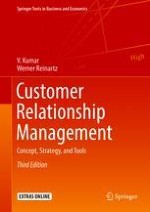2018 | OriginalPaper | Buchkapitel
10. Loyalty Programs: Design and Effectiveness
verfasst von : V. Kumar, Werner Reinartz
Erschienen in: Customer Relationship Management
Verlag: Springer Berlin Heidelberg
Aktivieren Sie unsere intelligente Suche, um passende Fachinhalte oder Patente zu finden.
Wählen Sie Textabschnitte aus um mit Künstlicher Intelligenz passenden Patente zu finden. powered by
Markieren Sie Textabschnitte, um KI-gestützt weitere passende Inhalte zu finden. powered by
